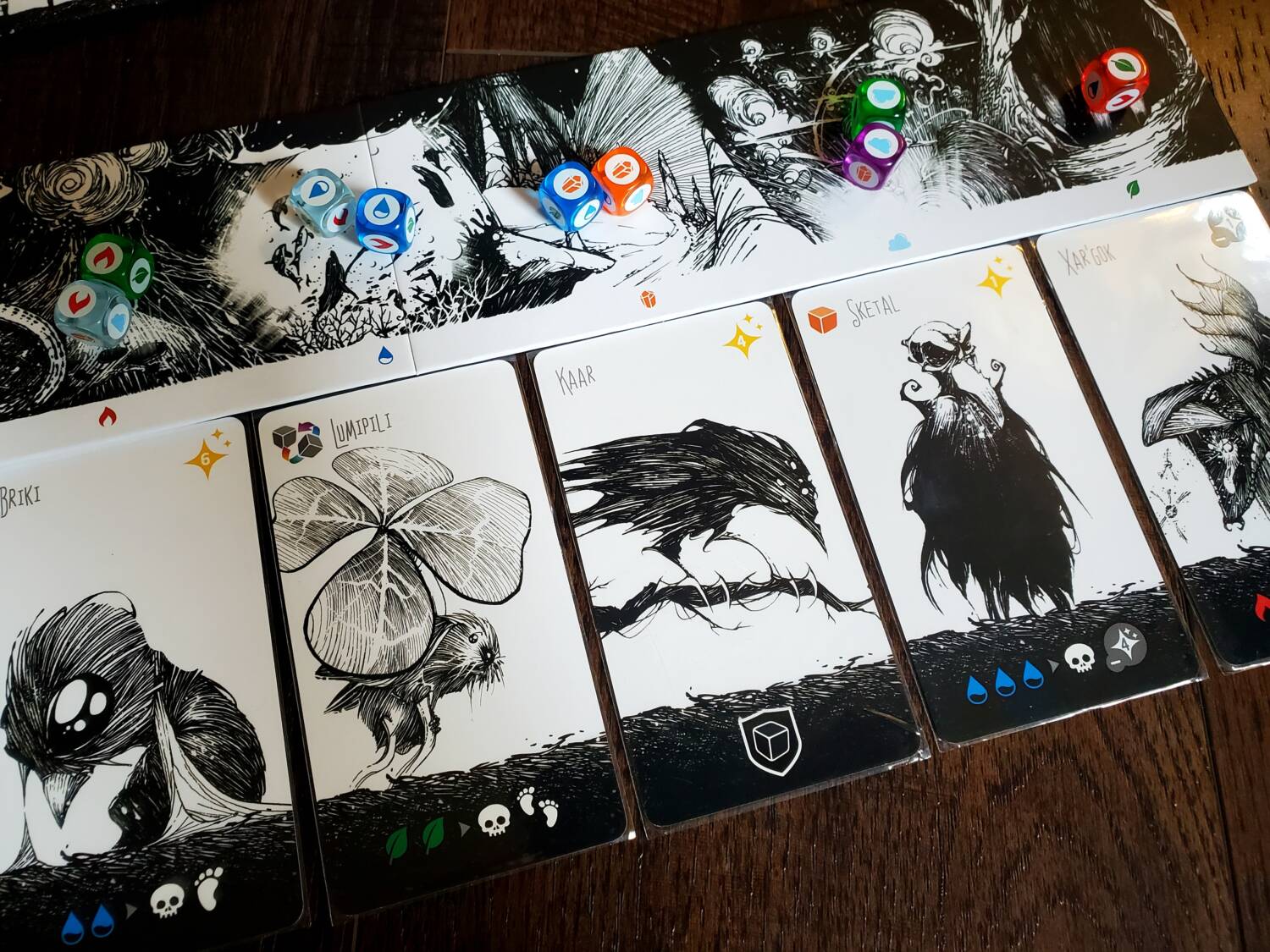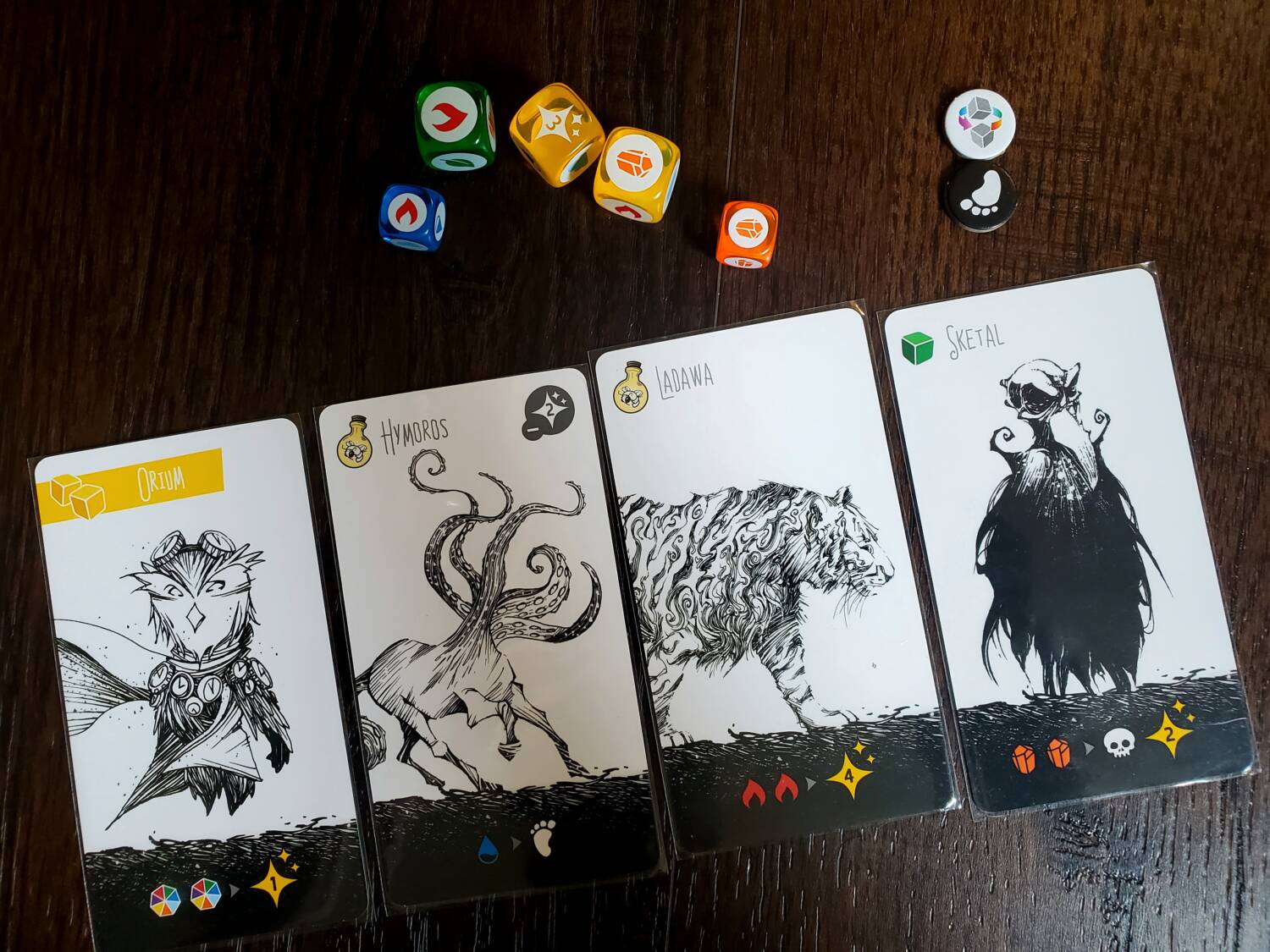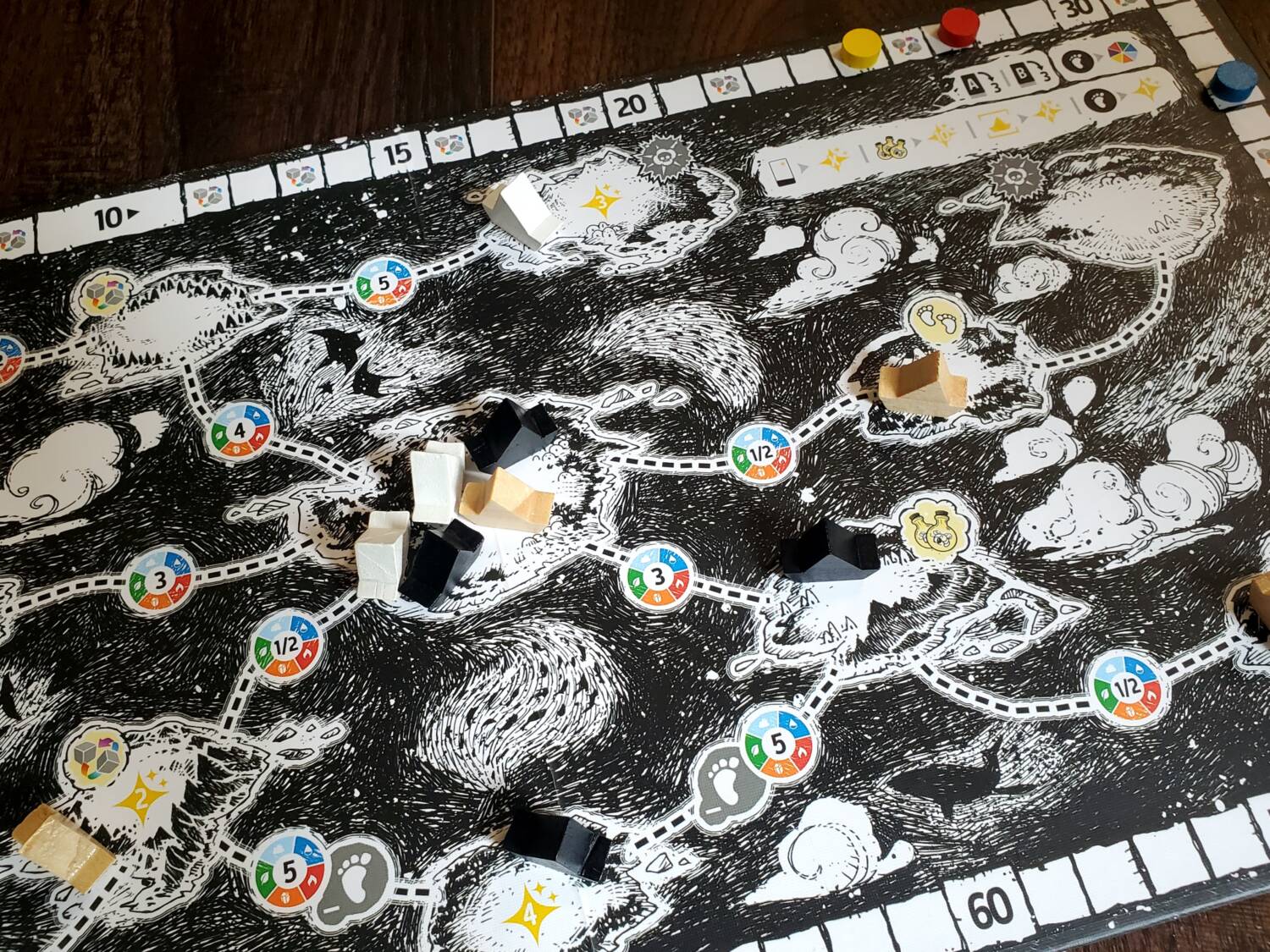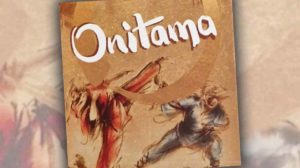Without a doubt, Glow puts a beautiful first foot forward.
The box is unique, the illustrations are stunning. The first two pages of the rulebook are a journal, the story of one Adventurer’s eight-day trek out of the land of shadows. I’d call that a suggestive move, and one that proves the level of commitment to the setting. In the journal, Pocana (one of the critters in this adventure) is chasing light Shards, meeting friends, and testing the hand of Fate in a quest to battle a world of darkness. The introduction is a narrative stroll through one game of Glow. Players take up this mantle in the family-weight, dice-chucking, push-your-luck-engine builder.
Every day
Mechanically, Glow has a nice rhythm—eight Days of mildly consequential decisions. In the Morning, players add a new Companion to their journey from a market of five. Companions primarily interact with the dice, but they may also bring a boon of points, dice, abilities, etc. Rounding out the decision, each card is accompanied by a number of small dice, the quantity of which is determined at the end of the previous Day.

In the Late Morning, players roll their full-size character dice plus any acquired mini-dice to obtain icons of the elements, and the light tension of luck-pushing begins. Rerolls come by way of tokens, Companion boons, or moving backward to the next marker on the score track. The aim is simple: accomplish the desired effects on the cards, multiple times if possible. The subtle misdirection is also interesting: avoid the undesirable effects until the opportune moment, or in some cases, forever. Some Companions are jovial friends, spouting resourcefulness in perpetuity. Others help, but pay the ultimate price in the process. Others yet promise rewards in the end, but hold negative consequences over your head unless you protect them from the elements (AKA, the dice).
At Noon, the dice resolve, players earn their light Shards, Fireflies, and Footprints, endure the death of Companions, and suffer the effects of cursed darkness. Because the dice are never consumed, effects can activate multiple times. Because the Companions live at the whim of chance, effects are unavoidable if the elements are present.

In the Afternoon, players carry out movement on the map based on the requirements and the elements rolled. On the “Province of Shadows” side of the map, point-to-point movement comes by individual element icons, while on the “Archipelago of Darkness” side, the number of unique icons rolled determines island movement. Footprint tokens enhance the options. In both cases, the aim is the visitation of specific locations to earn light Shards in the endgame. As icing on the cake, interim locations unleash bonus tokens along the way. Occasionally, the map requires a loss of points, the life of a Companion, or provides for the removal of a curse.
In the Evening, players return those acquired mini-dice to the board according to the elements rolled during the round, which shuffles up market temptations for new Companions entering the fray. Following the eighth day, players score points from their cards and their location(s) on the map. Accumulated Fireflies score if they exceed the number of Companions. Leftover Footprints are actually fairly lucrative, causing them to double as a collection piece throughout the game.
On my mind
After the first play, which is likely to be quite procedural, the largely simultaneous Days move quickly. Players roll, reroll, claim their goodies, move on the map, and reset their dice without much need for interaction or accountability (provided you have honest friends and children). Effects stay local to the player and map movement comes without hindrance, so the overlapping pace is a welcome design choice in order to get back to the Companion market.

The market is such a clean mechanism. Without a card cost, the decision rests somewhere among a card’s native bonus, potential endgame worth, the desirability of the dice effect, and the mini-dice and/or tokens attached. Every decision at the market weighs the immediate and the long-term, the particular bent of the dice and the engine already in play. The selection process lasts only moments, but they are really enjoyable moments.
Perhaps my favorite piece of Glow’s dice ethos is the balance of wanting and avoiding. There are several effects whose trigger comes by the absence of certain icons. Players might utilize these to hedge their bets when their preferred dice seem to flee Dame Fortune’s wicked laughter. But because the dice effects are required, there are cards whose value is in merely keeping the Companion alive—by avoiding a dice result—to harvest the point value in the end. These peculiarities mean some players aren’t driven to market by the need for dice, but rather by the need for scarcity.
Equally compelling, the use of the score track to purchase rerolls of one or two dice presents a certain silent interactivity. In the same way players watch one another before burying their hands in the bag “just one more time” in the Quacks of Quedlinburg, Adventurers here eye the scoreboard to determine if their sacrificial “one more roll” is worthwhile given the current circumstance. If everyone is doing it, why shouldn’t I? Then again, if everyone’s doing it, perhaps now is the moment to resist and reap the benefits of caution.
As the days pass and familiarity grows, the dice of Glow begin to speak fluently on several levels. The die color reveals its propensity. With five elements in play, the one extra side of each die is commensurate with the color: blue dice have one extra water, red, fire, and so on. The rolled dice (acquired for the round with the Companion), then, speak at once about the current abilities, again about the map movement, and finally about their potential placement on the next Day’s market board. As rerolls are limited to one or two dice at a time, the die’s “preference” weighs in on the odds of success and the potential effects of a given roll. This language is easy to learn and helps in decision-making.
None of this is complex, mind you. Glow is a simple romp that the little kids can enjoy. But it’s perhaps a more thoughtful romp than many. In fact, what I’ve come to appreciate is just how cleanly the gameplay flows. It’s easy to take the efficiency of the design for granted.
I can say
On the more critical side—my goodness, the pieces are small. The minor dice hover in size near a typical cube. Think a wee smaller than Sagrada—at least, they feel smaller. The meeples, too, are small. The scoring track discs are smaller than your multivitamin. The cards? Dwelling in the tarot department, they are the exception. The board? A single-fold twice the size of the mid-size box, but small compared to many. These are cost-cutting proportions. I understand the dice need to be different sizes, but some of the components could potentially be larger. And the wooden bits are definitely lacking the imagination and pop of the rest of the game. With artwork like this, I am sad to see so many humdrum pieces alongside. I’m not saying a deluxe edition is worthwhile, but a few creative and thoughtful choices equal to the cards and dice would go a long way to earning Glow a revered status in the family welterweight division.

More an observation than a complaint for a push-your-luck game: I wouldn’t call Glow thrilling. No one will gleefully curse as if they were betrayed in their helplessness à la Can’t Stop. Nor will they curse in frustration as if they were betrayed by the predictable futility of Yahtzee. Glow is enjoyable, thoughtful, even, because the luck-pushing has counterweights. You depend on dice, but you have a say in how many. You are chasing outcomes, but you create the engine of your own fist-shaking frustration. If you don’t trust your luck, you can even build an engine fueled by failure. There are ways to effect change. There are smiles. There are laid-back “oohs” and “ahhs” cloaked by the guise of strategy.
Thankfully, I love laid back, and the art is so good that it outweighs my other aesthetic concerns.
All the time
And that art. I never would have guessed the cover and board belong to Vincent Dutrait. Glow has to be one of his most eclectic projects. Ben Basso deserves a massive shout-out for the artwork on the cards. The pen & ink illustrations are a refreshing change of pace, the color accents are loud and distinct, and the characters are of the sort that hold your attention for their awkward goodness. The world here is interesting. My kids adore the critters. Heck, so do I.
Perhaps most importantly, Glow keeps coming to the table. The subdued appeal is still shining. I cannot think of a greater testimony for a game than that it out-maneuvers much of the collection and finds its way, repeatedly, to the dining room.
Obviously, this little nighttime excursion is deeply luck dependent, and that will make the decision for many gamers before anyone cracks the shrink wrap. Dice is as dice does. But there are enjoyable mechanisms to battle that wheel of Fortune. You can build an engine that thrives on a quantity of dice. You can build one that thrives on a dearth. You can build a diversified engine or a hyper-focused-but-dubious precision machine. You can pick cards based on their endgame points, or just base decisions on cuteness. It really doesn’t matter. You’ll be packing up the game less than an hour later, and you just might get excited when the rolls go your way. It’s not perfect, but kudos to Bombyx and Cédrick Chaboussit for a quirky, clever winner.












Add Comment